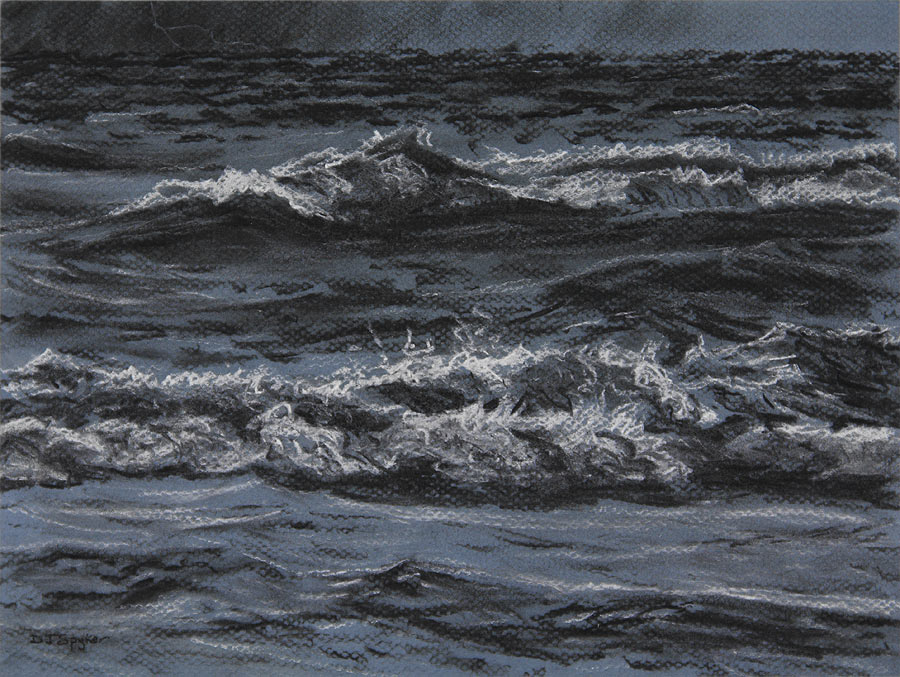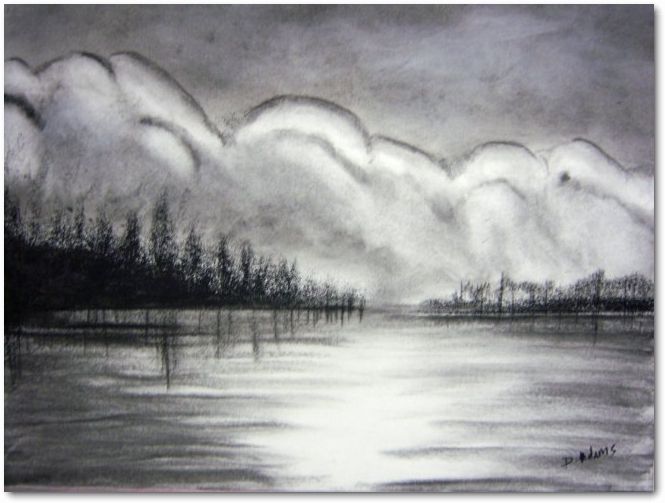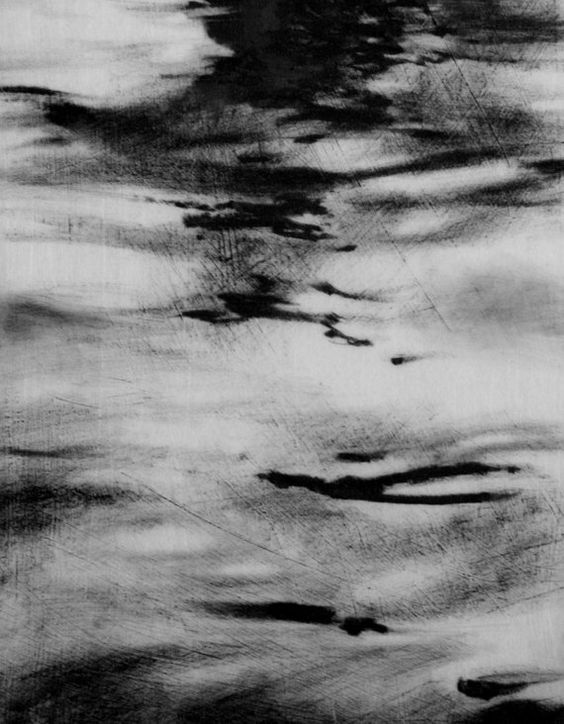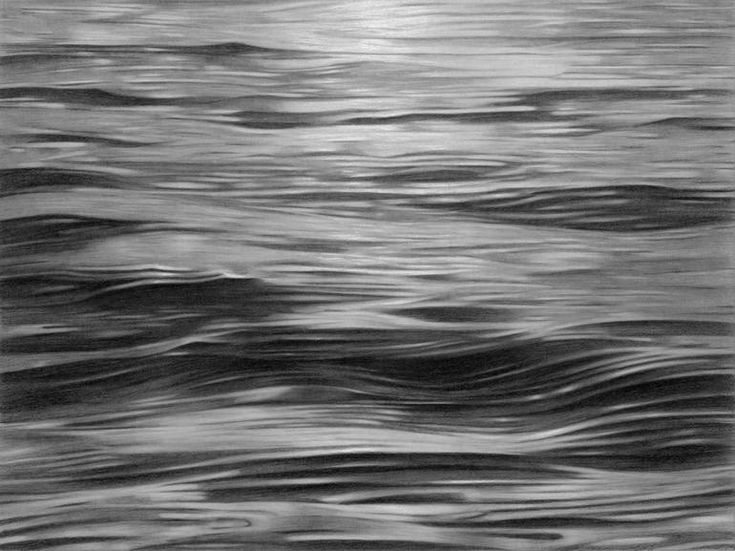Charcoal water drawing is a unique and fluid art form that combines the boldness of charcoal with the softness of water to create ethereal and dynamic compositions. This guide leads artists through the process of mastering this medium, exploring the melding of shadows and light. From the selection of materials to the finishing touches, discover how you can harness the elements of charcoal and water in your artistic journey.
Choosing the Right Tools
Selecting Charcoal for Your Artwork
The choice of charcoal is critical when embarking on charcoal water drawing. Artists typically select from three main types: vine, compressed, and pencil charcoal. Vine charcoal, being soft and easily erasable, is ideal for subtle shades and initial sketches. Compressed charcoal, with its intense darkness, is perfect for strong lines and deep shadows. Charcoal pencils offer precision for details and fine-tuning. Each type grants versatility during the layering process, allowing for varied tones and textures.
The Importance of Paper Quality
Paper quality can make or break a charcoal water drawing. Watercolor paper, with its high absorbency and resilience, is an excellent canvas for this medium. The texture of the paper also plays a role, providing a toothy surface that holds charcoal particles effectively. Go for a heavier weight to handle the combination of charcoal and water without warping or pilling. Investing in good quality paper ensures a stable groundwork for your artwork.

Preparing to Draw
Sketching the Foundation
Begin your drawing with a light, foundational sketch using vine charcoal. Avoid pressing too hard, as the initial lines are a guide and should remain easy to modify or erase. Plan the composition by considering where the darkest darks and lightest lights will go, creating a map for your drawing’s values. Allow the charcoal to flow with light strokes, setting the stage for a compelling and balanced piece.
Priming with Water
The next step is to prime the areas of the paper where you plan to apply charcoal water. Using a clean brush and clear water, dampen these sections lightly. This preparation encourages the charcoal to spread and blend when it contacts the wet surface, creating softer edges and diffusions that characterize the medium. Be mindful of the water’s flow, as it will guide the subsequent behavior of the charcoal.

Mastering Charcoal Water Techniques
Blending Water and Charcoal
After sketching and priming, it is time to experiment with blending water and charcoal. Dip your brush into water and pick up a small amount of powdered charcoal, or directly take it from your stick or pencil. Apply it to the wet paper and watch as the charcoal disperses, creating gradients of gray. Vary the amount of water and charcoal to play with the intensity of the shades. Use this technique to fill in the larger areas of shadow, building the foundation of your drawing’s light and dark balance.
Achieving Fine Details
For adding fine details and sharp lines, a charcoal pencil becomes an essential tool. Use it on drier areas of the paper to prevent excessive spreading. Its precision allows you to refine edges, enhance textures, and define shapes. This contrast between the fluidity of the blended areas and the clarity of details will add depth and interest to your drawing.

Exploring Light and Shadow
Creating Contrast
In charcoal water drawing, striking a balance between light and shadow is vital to achieve the desired atmosphere. Use water to soften and lift charcoal in lighter areas, such as highlights or reflected surfaces. Conversely, layer compressed charcoal in areas you wish to deepen and darken. Brush technique matters here; employ a mix of dabbing, stroking, and lifting motions to manipulate the medium and to transform the grayscale into a lively interplay of shadows and light.
Capturing the Essence of Your Subject
The essence of your subject comes alive through the thoughtful application of contrast. For a realism effect, observe your subject closely, identifying where the light falls and where shadows form. Translate this interplay onto your paper, replicating these dynamics to convey depth, volume, and emotion in your drawing. If you aim for a more abstract or expressive piece, let the charcoal and water flow more freely, creating organic shapes and lines that suggest rather than define.

Finishing Touches
Refining Your Work
As your charcoal water drawing nears completion, it’s the perfect time to refine and adjust. Step back and review your work as a whole, adding finishing touches. Erase or lift charcoal to recover highlights or soften too dark areas. Use sharp charcoal lines to bring back definition where needed. This stage is crucial for finescaling the balance between shadows and light, ensuring that every element of your piece is intentional and polished.
Sealing the Drawing
To preserve your creation, sealing the drawing with a fixative is essential. This will prevent the charcoal from smudging or dusting off. Choose a fixative meant specifically for charcoal and spray it evenly across your drawing, taking care not to oversaturate any area. Let it fully dry before framing or handling. By sealing it, you are ensuring the longevity and stability of your artwork, allowing it to be appreciated for years to come.

Sharing Your Art with the World
Presenting and Framing
Now that your charcoal water drawing is complete and sealed, the next step is to share it. When framing, choose a mat and frame that complement rather than overpower your artwork. UV-protective glass is a good investment, as it guards against fading and environmental damage. Proper presentation enhances the aesthetic appeal and invites viewers to immerse themselves in the delicate balance of light and shadow that your drawing captures.
Digital Showcasing
In today’s digital age, showcasing your artwork online can garner appreciation and feedback from a global audience. High-quality photographs or scans of your piece are crucial in accurately conveying the nuances of your drawing. Consider creating an online portfolio or using social media platforms to reach art enthusiasts and potential buyers. Interacting with the art community not only builds connections but also opens up avenues for growth and inspiration.
Reflecting on Your Artistic Growth
Learning From Each Piece
Every charcoal water drawing offers a learning experience. Reflecting on what worked and what presented challenges helps hone your skills. Did the shadows convey the mood you were aiming for? Could the light areas have been more luminous? Self-evaluation is an essential part of growing as an artist. Jot down notes or keep a sketchbook with reflections and ideas for future drawings to continuously evolve your technique.
Pushing Creative Boundaries
As you grow more comfortable with the medium, challenge yourself to push creative boundaries. Experiment with unconventional tools, mix charcoal with other media, or try different paper textures and colors. Each variation brings an opportunity for surprising results and artistic discoveries. Stay curious and open-minded, and let your creativity lead the way to innovative expressions of shadows and light.